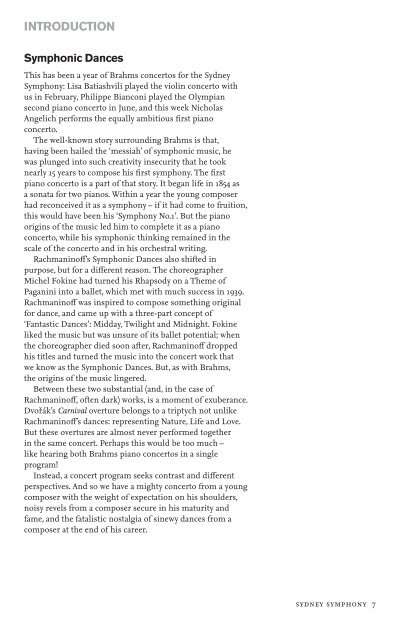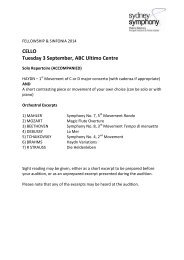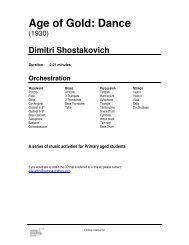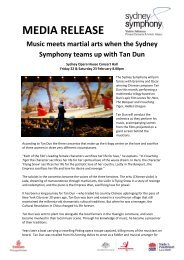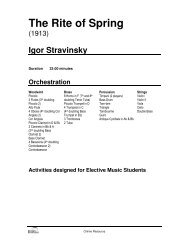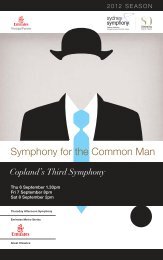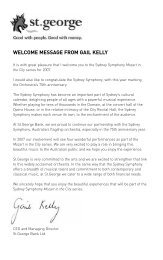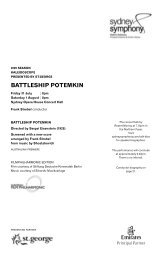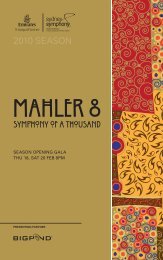Symphonic Dances - Sydney Symphony
Symphonic Dances - Sydney Symphony
Symphonic Dances - Sydney Symphony
You also want an ePaper? Increase the reach of your titles
YUMPU automatically turns print PDFs into web optimized ePapers that Google loves.
INTRODUCTION<br />
<strong>Symphonic</strong> <strong>Dances</strong><br />
This has been a year of Brahms concertos for the <strong>Sydney</strong><br />
<strong>Symphony</strong>: Lisa Batiashvili played the violin concerto with<br />
us in February, Philippe Bianconi played the Olympian<br />
second piano concerto in June, and this week Nicholas<br />
Angelich performs the equally ambitious fi rst piano<br />
concerto.<br />
The well-known story surrounding Brahms is that,<br />
having been hailed the ‘messiah’ of symphonic music, he<br />
was plunged into such creativity insecurity that he took<br />
nearly 15 years to compose his fi rst symphony. The fi rst<br />
piano concerto is a part of that story. It began life in 1854 as<br />
a sonata for two pianos. Within a year the young composer<br />
had reconceived it as a symphony – if it had come to fruition,<br />
this would have been his ‘<strong>Symphony</strong> No.1’. But the piano<br />
origins of the music led him to complete it as a piano<br />
concerto, while his symphonic thinking remained in the<br />
scale of the concerto and in his orchestral writing.<br />
Rachmaninoff ’s <strong>Symphonic</strong> <strong>Dances</strong> also shifted in<br />
purpose, but for a diff erent reason. The choreographer<br />
Michel Fokine had turned his Rhapsody on a Theme of<br />
Paganini into a ballet, which met with much success in 1939.<br />
Rachmaninoff was inspired to compose something original<br />
for dance, and came up with a three-part concept of<br />
‘Fantastic <strong>Dances</strong>’: Midday, Twilight and Midnight. Fokine<br />
liked the music but was unsure of its ballet potential; when<br />
the choreographer died soon after, Rachmaninoff dropped<br />
his titles and turned the music into the concert work that<br />
we know as the <strong>Symphonic</strong> <strong>Dances</strong>. But, as with Brahms,<br />
the origins of the music lingered.<br />
Between these two substantial (and, in the case of<br />
Rachmaninoff , often dark) works, is a moment of exuberance.<br />
Dvorˇák’s Carnival overture belongs to a triptych not unlike<br />
Rachmaninoff ’s dances: representing Nature, Life and Love.<br />
But these overtures are almost never performed together<br />
in the same concert. Perhaps this would be too much –<br />
like hearing both Brahms piano concertos in a single<br />
program!<br />
Instead, a concert program seeks contrast and diff erent<br />
perspectives. And so we have a mighty concerto from a young<br />
composer with the weight of expectation on his shoulders,<br />
noisy revels from a composer secure in his maturity and<br />
fame, and the fatalistic nostalgia of sinewy dances from a<br />
composer at the end of his career.<br />
sydney symphony 7


